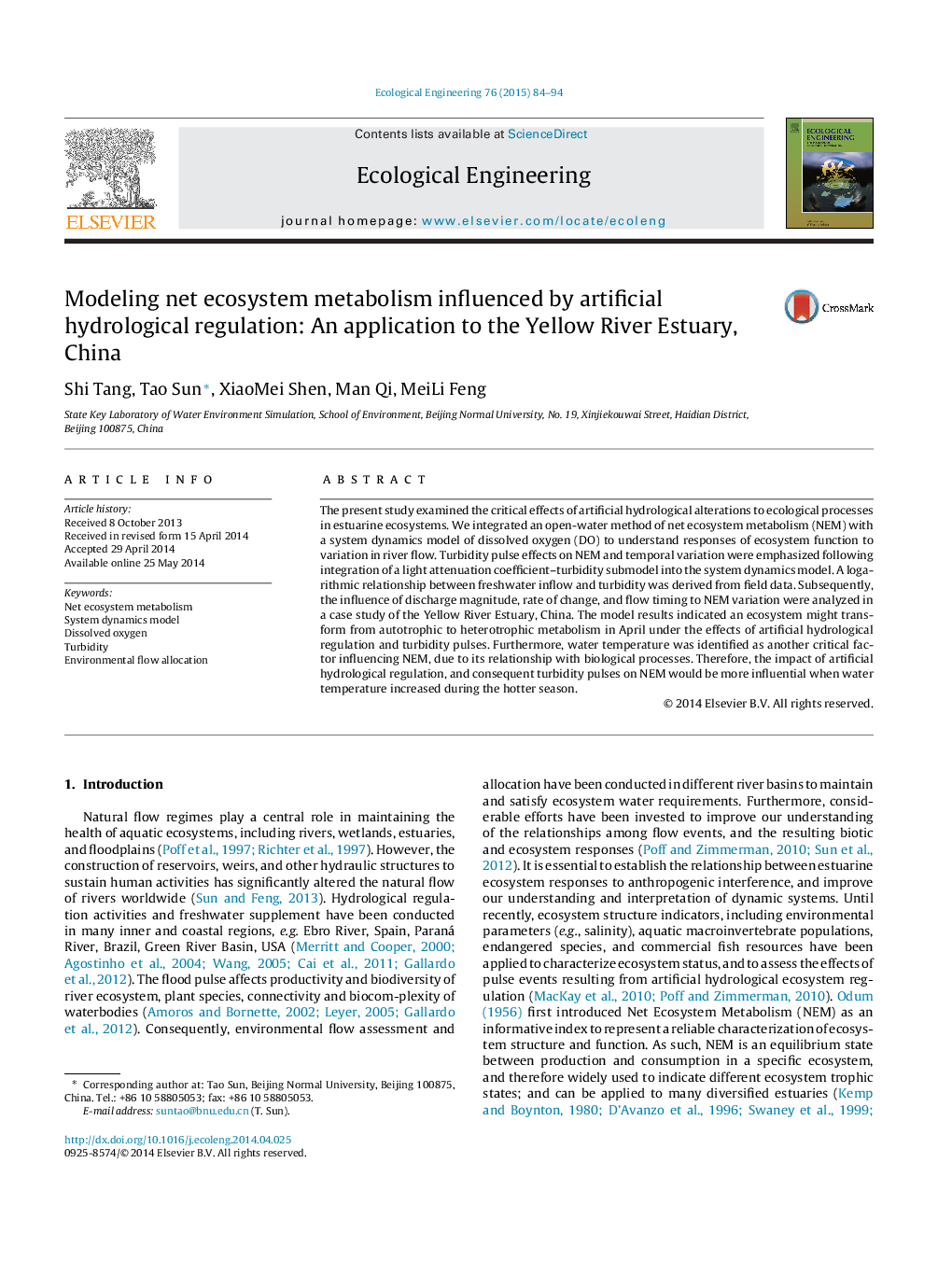| Article ID | Journal | Published Year | Pages | File Type |
|---|---|---|---|---|
| 6301816 | Ecological Engineering | 2015 | 11 Pages |
â¢DO system dynamics model and open-water method were integrated to simulate NEM.â¢Turbidity effect was emphasized by light attenuation coefficient-turbidity model.â¢Ecosystem might get more heterotrophic under turbidity pulse.â¢The impact of turbidity on NEM might be more prominent under higher temperature.
The present study examined the critical effects of artificial hydrological alterations to ecological processes in estuarine ecosystems. We integrated an open-water method of net ecosystem metabolism (NEM) with a system dynamics model of dissolved oxygen (DO) to understand responses of ecosystem function to variation in river flow. Turbidity pulse effects on NEM and temporal variation were emphasized following integration of a light attenuation coefficient-turbidity submodel into the system dynamics model. A logarithmic relationship between freshwater inflow and turbidity was derived from field data. Subsequently, the influence of discharge magnitude, rate of change, and flow timing to NEM variation were analyzed in a case study of the Yellow River Estuary, China. The model results indicated an ecosystem might transform from autotrophic to heterotrophic metabolism in April under the effects of artificial hydrological regulation and turbidity pulses. Furthermore, water temperature was identified as another critical factor influencing NEM, due to its relationship with biological processes. Therefore, the impact of artificial hydrological regulation, and consequent turbidity pulses on NEM would be more influential when water temperature increased during the hotter season.
